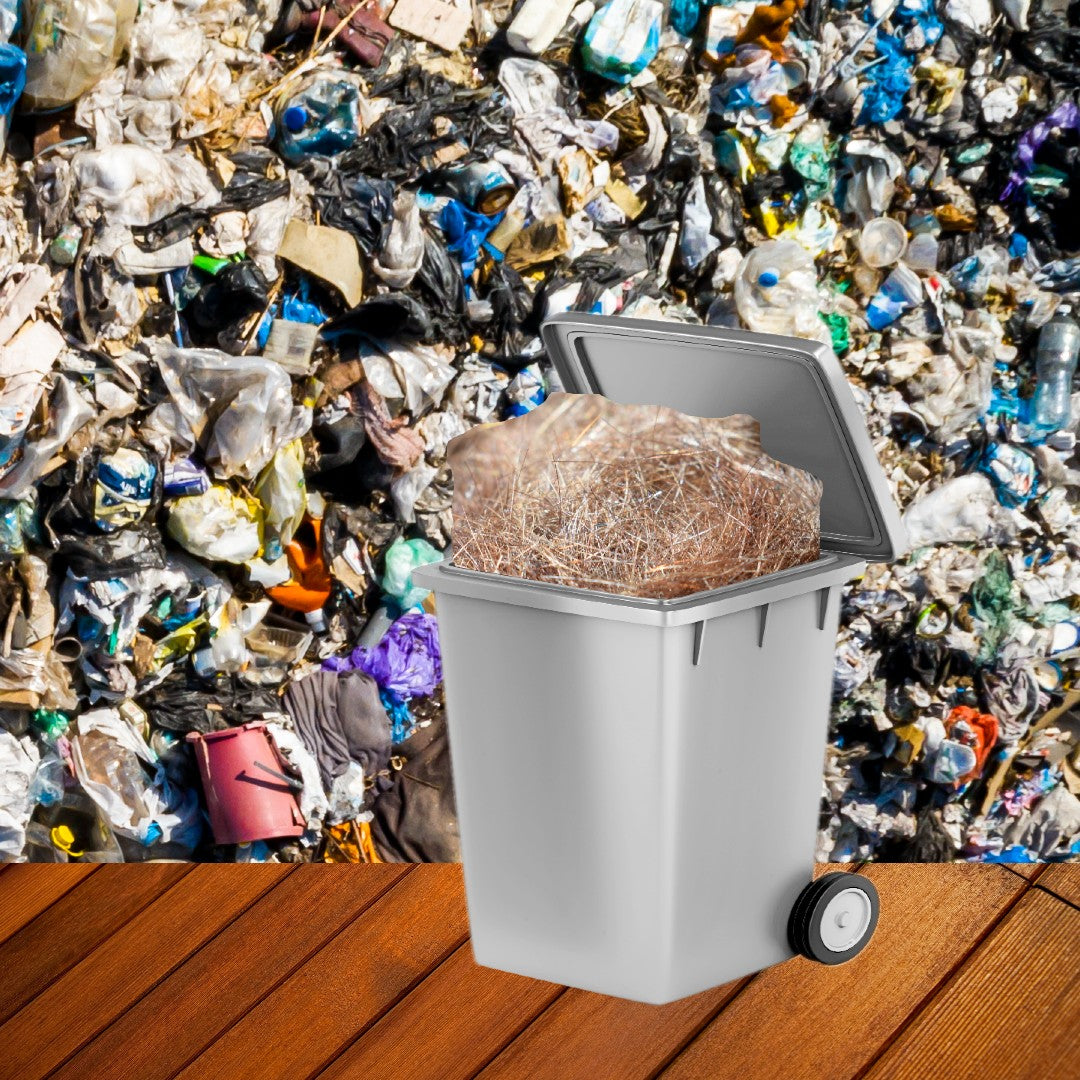The thing Green Salon Collective (GSC) members get most excited talking about with their clients is our hair recycling service for waste hair in salons. It has been a revelation for many and of course, it would be: it’s the focal point of hairdressing businesses but possibly their least thought-about waste stream. Few people were ever very curious about what happened to all that hair once it fell to the salon floor but now GSC hairdressers have a new talking point when their chairs are full! By talking about the 10 different ways that GSC can recycle hair and reduce hair salon waste, you can earn new clients, engage current clients and do your bit for the planet.
“Did you know hair can be used to make booms which clean up oil spills?”
“Hair is rich in nitrogen, don’t you know, and so it’s an excellent addition to compost.”
We now have over 10 solutions for hair waste, which are all much more beneficial than dumping it in landfill sites around the country. GSC is growing fast, and we will be handling more and more and yet more hair waste in the coming years, and we’re hoping to expand our hair recycling capabilities even more as we grow. Our vision from the start has been to provide truly circular solutions for all salon waste streams and our hair recycling services have evolved to match the number of amazing sustainable hair salons that we’re thrilled to have as our members. Luckily, a good amount of work has already been done in this area where researchers, designers and other creative professionals have invented ways to make use of this waste material.

Signs of potential and what we're doing
Keratin is a type of structural protein that makes up your hair and nails as well as wool and feathers. Keratin-based wastes, like hair, decompose slowly but that does not necessarily make them ineffective in soil. Some scientific studies have shown that keratinous wastes are excellent for slow release of nutrients making them suitable for soil amendments and fertilizers to improve agricultural soils (Jeliazkov, 2005; Reddy, 2021; Kumar, Kumar, & Kushwaha, 2021). Here’s our research into hair in soil, and what that could mean for composting options. We’re currently working on another piece of research to see if felted hair can act as a ‘potting felt’ and how it can affect water retention in house plants.

We recently collaborated with Natural Wool Co. in Cornwall, to create a gardening twine made from wool and hair, as an alternative to standard plastic twines, with some of our members salons trying it out in their own gardens!

Other researchers are also manipulating hair waste using mechanical processes. Deborah Lopez and Hadin Charbel from Pareid Architecture are also London-based researchers doing exactly that. Their main interest is in using hair for architectural purposes and building materials and they have also had success turning hair into felt. We are in conversation with Lopez and Charbel to see if we can work together to bring their ideas for using hair four soundproofing, insulation and other similar applications to life.
These two architects have really pushed the boundaries of the uses of hair with their latest project, Foll(i)cle. This started with an installation at Bangkok Design Week in 2019 where participants donated samples of their hair along with information about where they lived and worked. Samples were then sent to a toxicologist in Italy who had previously researched the presence of heavy metals in hair. With their collected data they were able to create a toxicartography, a sort of environmental pollution map, of the city of Bangkok. We are also in conversation with these architects to see whether we can recreate this project with a second test city, London.
Image courtesy of LWPR
In September 2022, we collaborated with Pareid Architecture to create ‘Chiaroscuro1’ (pictured above) as part of the London Design Festival. At Gina Conway’s Aveda Salon and Spa in Notting Hill, we installed a 3-metre towering sculpture, of intertwining columns, cladded with waste human hair. The work explores the future of open mining, exploring waste human hair in the context of a hair salon, where this amount of hair is generated every few days. Learn more about the project here.
Another local designer who is using hair felt is Alix Bizet. We are not just inspired by Alix's fashion pieces made from hair. And they are infinitely cool. We are also inspired by how she brings topics such as racism, gentrification and other social issues into the forefront when creating and curating her design projects. Here is an excellent example of design activism in action. Read more about Alix here.
Don’t knock it till you chop it
Hair has potential and not just on a person’s head. It’s the biggest focus of our R&D department and we want to know everything: how it impacts the soil and microorganisms; how it impacts water; how it can be used for potting; hot it can be used in compost; how it can be used in agriculture; how it can be made into products; how it can be made into building materials; how it can be used to map human health. Everything.
Our dream scenario would be if this underexploited resource could replace problematic or resource-intensive materials or products. Think about the textile industry. Think about packaging. Think about construction. Some experts believe that the amount of human hair waste generated annually is roughly the same as wool. Considering there are well over a billion sheep on the planet, that is an enormous amount of material that can be used for good.
Currently, we have over 10 different ways that we recycle hair. They include…
- Composting
- Waterway Clean Ups
- Hair Mats
- Regenerative Biomanufacturing
- Wool Alternatives
- Hair Rope Making
- Hair Felt
- Architecture
- Wigs
- Art
Want to learn more about what we do to recycle hair? Head to our recycling page here!
And, if you’re a salon who wants to join in the fun and start recycling your hair waste, give us a call on 0333 577 6967 or buy your starter kit on our shop here.
References and further reading
Jeliazkov, V.D. (2005) Assessment of Wool Waste and Hair Waste as Soil Amendment and Nutrient Source. Journal of Environmental Quality, 34(6):2310-7
Reddy, C. et. al. (2021) Valorization of keratin waste biomass and its potential applications. Journal of Water Process Engineering, 40(April 2021):101707
Kumar, J., Kumar, P., & Kushwaha, R.K.S. (2021). Significance of keratinophiles in biofertilizer development from keratinous waste: Upcoming perspective. Journal of Biofertilizers, 1(2021): 95-101
Pareid Architecture homepage and their project Foll(i)cle
Alix Bizet Studio homepage
Common Objective Data (2018) Global Wool Production and Sustainable Standards

